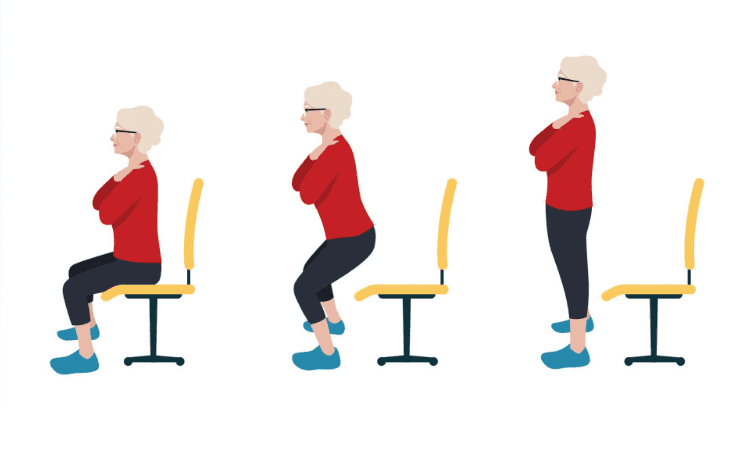At first glance — this seems trivial: getting up from a seated position. But this simple action can become a window into your overall physical condition. Medical professionals call it the "Sit-To-Stand test" (English: Sit-To-Stand or STS), and it surprisingly reveals a lot about your muscles, balance, endurance, and even heart risk.
What is this test?
STS is a self-assessment method that can be easily performed at home. All you need is a straight-backed chair (without armrests), a timer, and some space. Sit in the middle of the chair, cross your arms on your chest, place your feet flat on the floor — and count how many times you can fully stand up and sit down again in 30 seconds.

This test is widely used in geriatrics — to assess the physical condition of elderly people. However, it can also be a valuable marker of overall physical health and the functional capacity of the body for younger individuals.
What do your results mean?
Organizations such as the CDC (Centers for Disease Control and Prevention, USA) have established average benchmarks for each age group. For example, a person aged 60–64 typically performs 12–14 stands. In older categories, these numbers decrease. If your result is significantly below the norm — it’s a signal that you should consult a doctor.
For young people, it serves as a kind of fitness indicator. For instance, a study in Switzerland showed that at ages 20–24, the average result is about 50 stands per minute. But there were also exceptional participants who managed to stand up 72 times!
Why is this important?
A low score may indicate deteriorating heart and vascular function, muscle weakness, or fall risk. For the elderly, the last is especially dangerous: one-third of people over 65 fall each year. The consequences can be serious — from fractures to loss of mobility and social isolation.
Studies have even shown that people with worse results in the STS test have a significantly higher risk of mortality in subsequent years. But don’t be alarmed — it’s just a marker, not a verdict.
How to improve your result?
The most effective way is to stay active. Even light physical activities, such as household chores, walking, or taking stairs instead of the elevator, can have a significant impact. For those with limited mobility, it’s recommended to start with simple seated exercises, gradually progressing to full standing.
Playing with grandchildren, gardening, short walks — all of these not only improve scores but also positively influence emotional well-being and social activity. According to experts, loneliness is no less a health hazard than lack of physical activity.
Simple test — great significance
The STS test is not just exercise. It is a way to look at yourself, an opportunity to assess where you are now — and which direction to move to preserve or regain control over your own body. It doesn't require expensive equipment or medical expertise, but provides a clear idea of your physical shape and potential risks.
If you think, “Now is not the time” — perhaps that’s exactly the best moment to check your health. And remember: it’s never too late to change habits.



